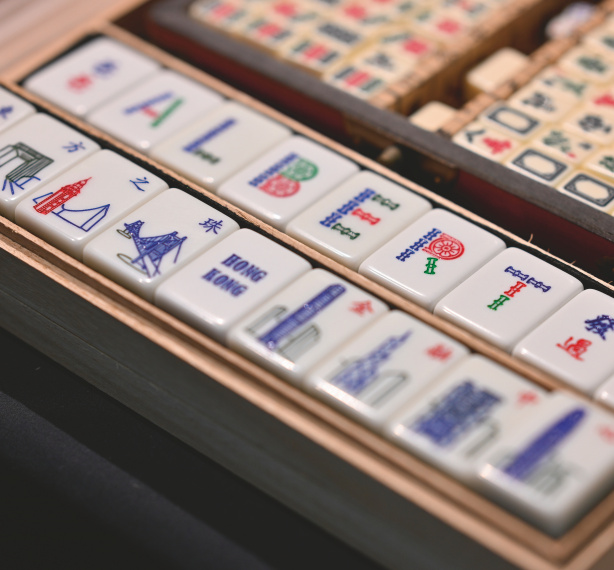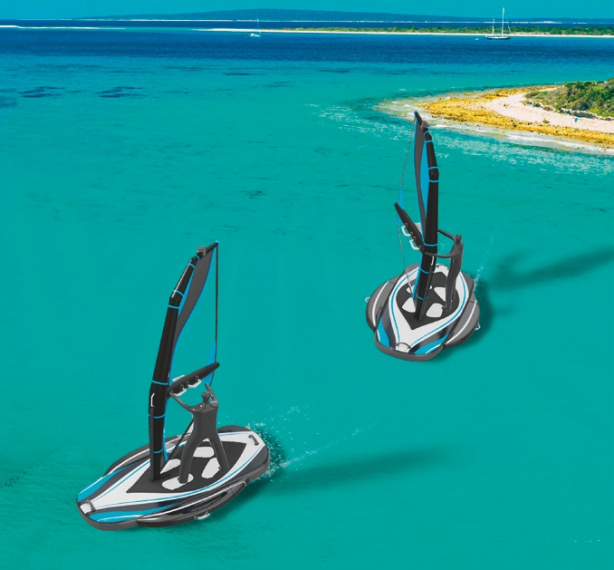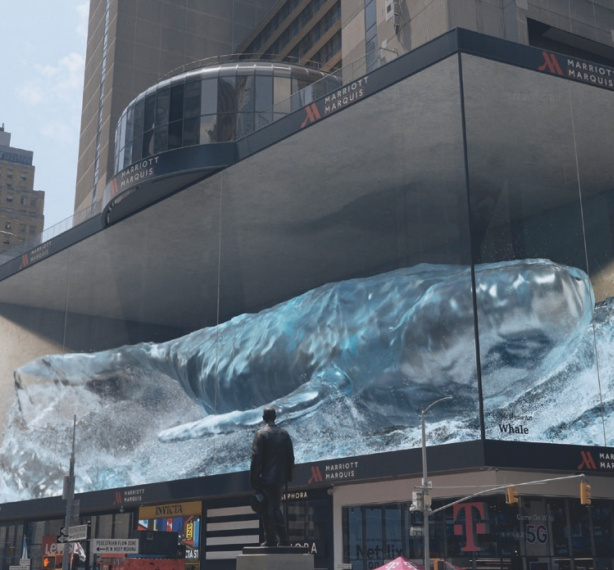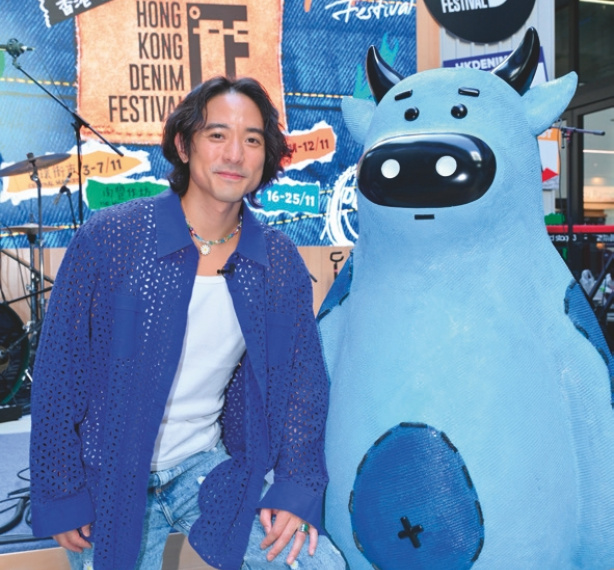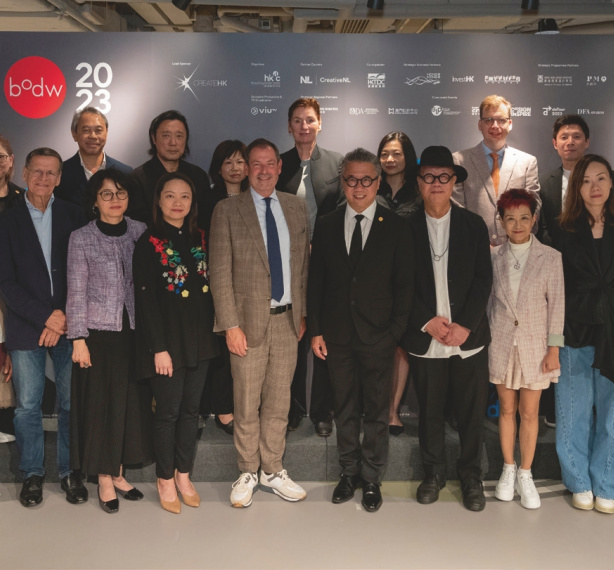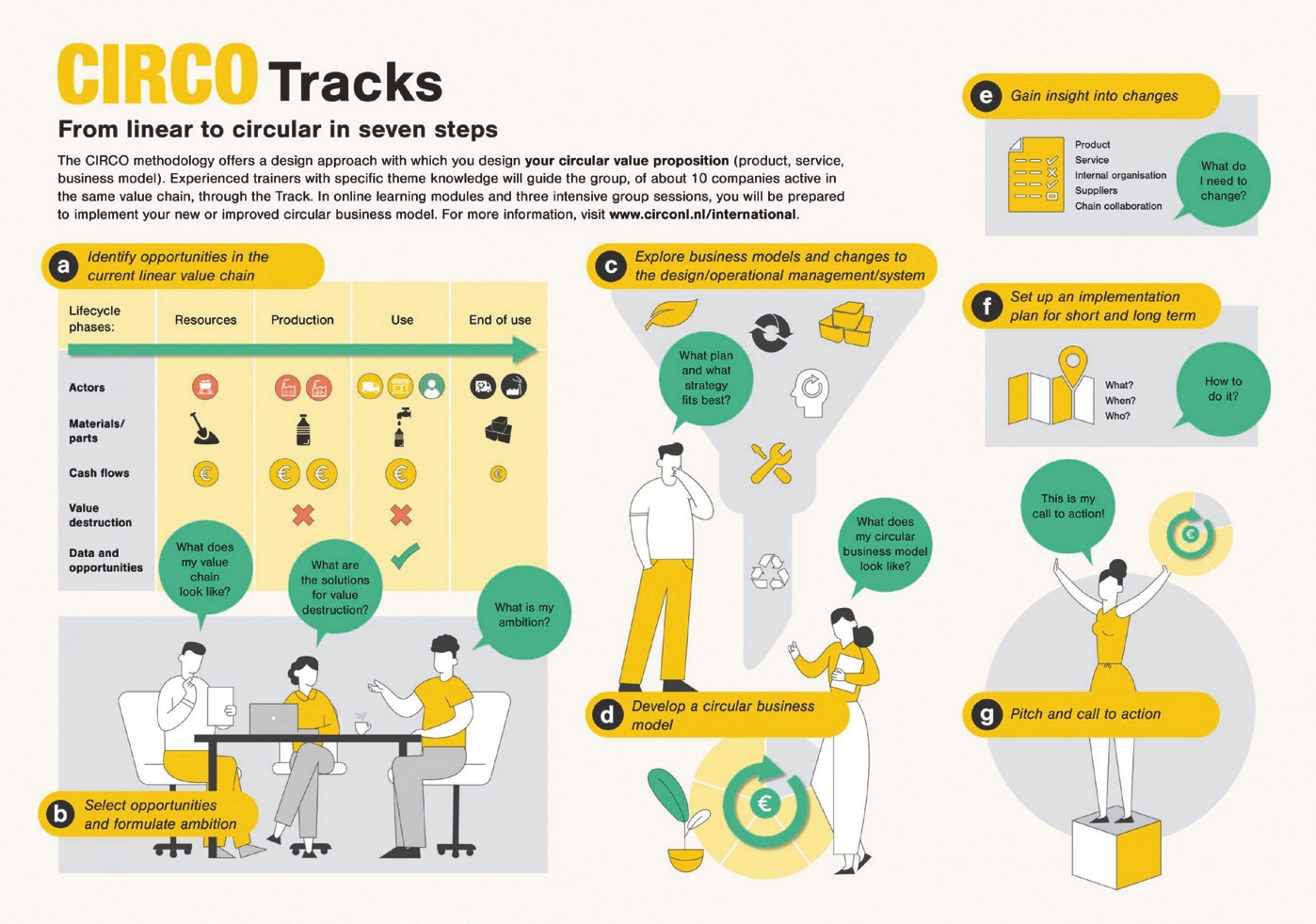
|
Imagine a world where resources can always be reduced, reused, repaired, recycled or recovered. The picture is perfect, but do such ambitions have a chance in a wasteful city like Hong Kong?
During the Knowledge of Design Week (KODW 2023) in June, SIGNED spoke with two Dutch authorities in circular design and learned how the groundbreaking approach may help Hong Kong and beyond.
Products that last and products that flow
SIGNED: The circular design tools have been applied in 14 countries. How are they adapted in different contexts?
Pieter van Os: While many tools in circular design are generic and valid everywhere, specific strategies depend on the value of products. Therefore, we work with at least two different frameworks: products that flow, and products that last. After grouping products into their value chains – those with shorter lifetime and lower value, and those with longer lifetime and higher value – we can then work together and identify the opportunities to address design challenges.
In our three-day workshops, representatives from 10 companies would engage in Open Track or Theme Track conversations. Some tools may be immediately applicable to address certain gaps, but some products, services, or business models may require redesign. Participants interact, share each other's knowledge, and consider what can be done to cope with the current linear situation and move towards circularity. Peer collaboration and cross-industry perspectives create concrete and practical outcomes.
Curriculum integration helps groom circular minds
SIGNED: How about students? Will they benefit from similar workshops?
Pieter van Os: Practising designers benefit from these workshops because they were not trained the same when they were studying, and we make up for that. Teaching current students our highly relevant principles would be more appropriate because they are the new generation of designers and business person, who should be prepared to initiate change. We have made our methodology available to universities in the Netherlands so that they can integrate circular design methods and tools into their curriculum.
Wasteful habit is not an excuse
SIGNED: How can we convince a habitually wasteful city like Hong Kong to convert to circularity? Recycling is not even properly practised here.
Pieter van Os: Land is scarce in Hong Kong, but this can be an advantage. People live close together, so the volumes are there. Logistics are also easier to organise for recycling. From a policy or business point of view, it is more important to aim at a higher level. For example, use a product for a longer period of time, redistribute products, or refurbish them for a second life. Recycling is the last resort. If Hong Kong really wants to make a change, food waste and textiles may be some priorities to consider because their carbon footprint is massive. When industries add up all the external costs and look beyond the price of the materials thrown away, they would realise the damage done costs much more than we can afford.
Cross-industry dialogues are crucial
SIGNED: Did participants discuss these topics during your morning workshop?
Pieter van Os: We had many designers attending, and they were very eager and motivated to learn about circularity and to take better care of the world. They note that this requirement is not usually present in their design briefs. They worked hard on workshop activities and were keen to learn how to redesign their own products using the principles. They are inspired to create businesses and, at the same time, be more efficient with materials and energy. The trick is to maintain long term competitiveness and reduce your footprint along the way. I think it is great that KOWD did not quit and continued during the pandemic. It is great to see different industries reuniting in a physical event. The programming is diverse, and we see some people from luxury goods, high-end entertainment, and hospitality, and then some are keen on tackling the planetary challenges. When participants from different worlds meet to make dialogues, they create a lot of value and inspire us to look at how to keep our high standards of living while ensuring that we don't harm this planet.
Sustainability Vs Circularity
SIGNED: Circularity principles seem to have some overlapping with sustainability. How should we differentiate between them?
Daan van Eijk: Circularity focuses on resource cycles, while sustainability is more broadly related to people, the planet and the economy. The movement under the name "circular design" started about ten years ago, but the practices have been there for some 50 years. We all learnt about repair, reuse, remanufacturing, recycle at school. But now, we have put them into a design model, making them easier to remember and understand. Simply put, the circular design model has a goal of keeping the value of a product. A product can be an object, a complete waste system or a complete food system. You focus on material and consider how to use that material for as long as possible.
Lessons from the Netherlands
SIGNED: We heard circularity is studied and practised much in the Netherlands.
Dan van Eijk: Personally, I thought it was during the mid-1980s when the first groups began discussing the ideas, and they really took off in the 1990s. Since then, we had many meetings with all kinds of experts and analysed many projects along different pathways for the design industry in the Netherlands. We do not want to have products ending up in the landfill. So, we strive to consider everything as a whole system. We look at usability, aesthetics and the possibility of repair to make products that people want to use or reuse for a long time. We also look at refusing to make products that are meant to be used just once and never again. It is not always easy to convince stakeholders about long-term economic gain, but early adopters are doing very well in the market. For example, an office furniture company that shifted to the circular design model is reusing 50% of its materials. Its products are still in high demand because customers stay with them despite a change in working from home. There are many similar success stories in the Netherlands.
Circularity in China
SIGNED: Is the circular design model already applied in China?
Daan van Eijk: I have seen people in China experimenting with some bottomup initiatives, the government supporting programmes with scale, and the industry setting meaningful goals that resonate with the principles of the circular design model. Wasteful mistakes were made from consumerism in affluent Western societies and China has looked for ways to skip that part and come up with a new approach. An example is the electric car industry. Many newcomers in China are producing quality electric cars for a very reasonable price because of the local capabilities in battery production. I think this is a big step that will support the country's No Poverty mission and its goal of achieving carbon neutrality by 2060.
Moving towards circularity in Hong Kong
SIGNED: Manufacturers are certainly initiating good changes. What can be done for a non-manufacturing place like Hong Kong to become a more circular economy?
Daan van Eijk: A lot of decisions are made in Hong Kong, as many are connected to or owning a full range of companies and factories, so a lot can be done at the system level. The building industry is another area where the society can reflect on how to make better use of materials and not be as wasteful. Design decisions on reusing building parts and lifetime extension are truly worthy to consider. The idea is to look at the city as one product and how to make that city circular.
Encouraging systemic change
SIGNED: How can we sustain the momentum of driving and adapting circularity?
Daan van Eijk: I am happy to see that events such as KODW are now more focused on creating an impact and are certainly fostering international knowledge exchange. By drawing people from a broad spectrum of design – including advertising, product design, fashion, and built environment – the circular design model can be better studied at a higher abstract level, then turned into concrete business ideas and then be applied to a total economic system. For students interested in learning more about circular design, practical handbooks, such as "Products that Flow" and "Products that Last ", offer good references and insights to inspire possibilities and pragmatic approaches. The road to becoming a circular economy will be long, but it is never too late to take the first steps to rethink our footprints, initiate this shift to make the best use of precious resources, and contribute to a more sustainable future. |


